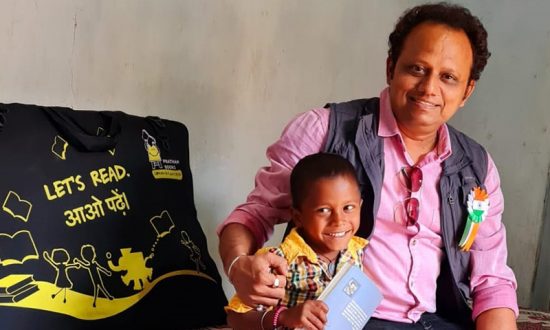42 years old Shubhasish Chakraborty wears several hats while discharging his duties as a General Manager in a global conglomerate. Apart from being an expert on tribal affairs who works tirelessly in the field of Community Development, Subhashish is an award-winning filmmaker, poet and short story writer. He is trying to bring tribal art, culture and talent to the international stage and through such recognition, he is aiming to improve the livelihood of tribal people. Shubhasish has been donating a major part of his salary for over 10-12 years to revive tribal areas in India. In a bid to engage children in a constructive way during the amidst COVID-19 lockdown, he has recently launched a painting competition in Jharkhand called ‘Rang Johar’. In just 20 days, Shubhasish has received more than 600 paintings, and he is only expecting this number to grow. In a conversation with Higher Education Digest, Shubhasish talks about his work, his passion and vision, his reasons for working in tribal India, and much more.
What has been the impact of COVID-19 on digitally deprived children? What should we do to support people on the wrong side of the digital divide?
The pandemic which we are passing through is of a quite different kind. It is still unfolding and taking long to settle. The long stay of uncertainty has severely affected every sector and so has adversely affected the learners/ students of both rural and urban areas.
During these hard times, survival has become a much greater priority than education. Where everyone is occupied just to make their breathing stable, technology made many of us let out a sigh of relief. These tedious days in lockdown have made us realize the pros of technology. When children were striving to go to school, online classes become the saviour. It is no news that greater technology and better learning is the future and that ways this has a great impact on the children who had no experience earlier with the usage of technology and digital infrastructure.
Educational institutions have tried to drag the syllabus and to take the bus to the next stop/ class. However, the syllabus runs in ascending order. if we miss the bus at one stop then we keep on missing. Children have gone to the next class, but have they achieved the grade-specific learning? What about the children of rural and tribal areas where they could not attend online classes even if any teacher tried to do so…as most of them do not have smartphones and even if they have many a time they are without charge/battery backup as electricity is still a problem in many tribal villages.
Two-thirds of the world’s school-age children – or 1.3 billion children aged 3 to moreover, globally 17 years old – do not have internet connection in their homes, according to a new joint report from UNICEF and the International Telecommunication Union (ITU).
Transformative change has come in the approach to education in the trying times. While the in-class experience provides a holistic learning environment, it might be a distant reality for those belonging to marginalised communities.
COVID-19 has highlighted the impact of the digital divide on children. Schools, classes, activities being moved to online platforms all over the world resulted in digitally deprived children being deprived of education. There is a whole section of society which do not own a computer or a smartphone, even if they have access to smartphone access to the internet is another big challenge, which results in children being left out with no means to stride along with the children who have access to the internet and other digital services leading to widening the digital divide gap.
A few of the initiatives might help to continue the education of underprivileged children:
- To support people on the wrong side of the digital divide initial steps should be focused on providing internet access to those who own a smartphone but face difficulties to access the internet due to various reasons such as network coverage, power cuts and economic reasons.
- Setting up Village Information Centres for remote learning.
- Creating WhatsApp groups for sharing lesson plans. SMS for those who do not have smartphones.
- Mohalla Classes- Taking School to the community (children).
- Parents Workshop- Recognising the local knowledge system of the parents and in turn recognizing the teacher in them. Even the parents of first-generation learners can do many activities for their children like story-telling, drawing, maths games etc. I believe that they have internalized many teaching-learning concepts
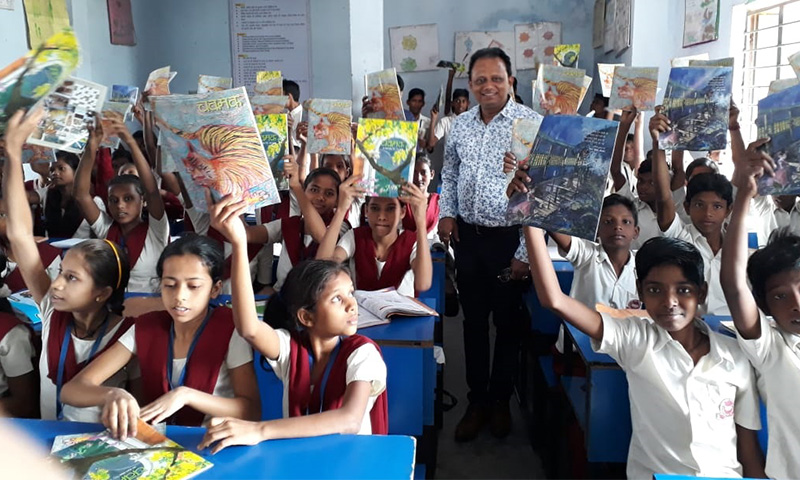
What is the reason despite the corporate job, you started social work?
I passionately believe in individual social responsibility. Wherever you are, do your bit and help the nation. The return is huge in terms of love, warmth and respect and things go positive beyond the log frames. I have been doing my bit since I was 16 years old and was teaching the underprivileged children in Jharkhand. I had collected books for underprivileged friend since my childhood days. These children were around the villages of small townships. Growing up in small towns, I had always been fascinated by rural and tribal culture and their tribal worldview. I was interested in the life and culture of these people, whose indigenous practices were barely recognised by mainstream culture. They have huge potential and wisdom; however, their dreams are not realized because of the limited resources.
Tell us about your journey so far as a social entrepreneur. What are the problems you try to solve through your social enterprises over the years?
My inclination for the rural culture and tribal life began at a young age, but I got an opportunity to explore it for myself in 2009 while working with Tata Steel and JUSCO in Jharkhand.
Over time, I acquired an interest in literature and language, which led me to pursue master’s in Linguistics from the Banaras Hindu University, Varanasi.
From there on, I built my career by specialising in corporate sustainability and strategic management. On the other hand, I took time off to strive for the upliftment of tribal and rural folk.
While working as a General Manager in a global conglomerate, I’m also an award-winning filmmaker, poet and short story writer who works tirelessly in the field of Community Development. I have been donating my salary for over 10 years in helping and transforming the underprivileged communities in Jharkhand. I have not only extensively travelled across various tribal areas in India, but also worked for their well-being and provided them platforms to exhibit their talent.
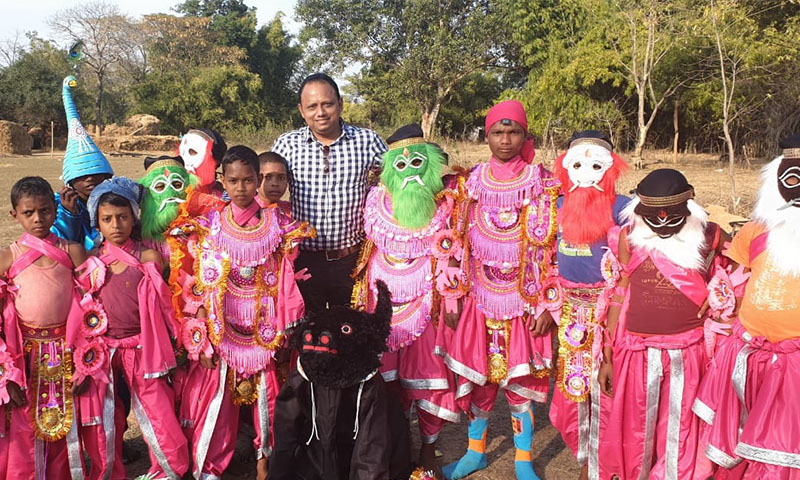
I have undertaken a slew of initiatives for the welfare of the lineal communities in Jharkhand, including setting up libraries for tribal children and organising exhibitions for painters belonging to Adivasi communities. Not only I have extensively travelled to most tribal areas in the country, but also written and documented their lifestyle and culture in the form of short stories and movies.
The region of Jharkhand is known to be home to many tribal groups like Munda, Santhal, Ho and Oraon, I used to go out to meet them every weekend. I observed their indigenous practices, lifestyle, and traditions. As days passed by, I also noticed the effort they put in to express their vibrancy through art and craft despite minimal recognition. That was when I decided to do my bit to pave a way for them to exhibit their talent.
As a result, I used my salary to organise an exhibition in Jamshedpur for the tribal and rural artists to display their work. Not only did the event receive a lot of acclaim from people, but also earned the artists a whopping Rs 21,000 from the sale of paintings.
The whole idea to come up with my movies was to bring about awareness amongst the masses. My first movie ‘Sa – The Search’ delves into the singing and painting traditions of the tribes in Jharkhand. While my second Magical Script throws light on ‘Ho’, a tribal language that has its roots in Jharkhand and Orrisa. My film received wide acclamation and as an impact “Ho” language is now being taught in the Universities in Jharkhand. I have s sponsored and curated the first exhibition for tribal painters in Jharkhand in 2011. And I am happy that it garnered a great response from people at large, especially community leaders and educational institutions. The blessing in disguise amidst this was that it brought back the lost confidence of tribal groups and helped them get back to their age-old profession.
Also, I started an initiative to strengthen the libraries across various schools in Jharkhand. Through collection drives spanning several years and distributed more than 7,000 books and magazines to 2,000 children in the Sonahatu, Patamda, Gamharia, and Chitarpur blocks of Jharkhand. This helped to develop and inculcate the habit of reading and writing in the students of the village. I organised awareness programs on education and health and also organized health camps where people from nearby villages also got benefitted.
Over time, I decided to adopt a village in the Jharkhand, where the majority of the population belonged to the rural and tribal communities to bring holistic development. I focused on the minute details of innovative interventions to empower the communities.
Additionally, the art form of ‘Chhau’ is being taught in the government school of Pandadih and the other two villages of Sonahatu Block to preserve the style among younger generations. Presently, 25 students are learning and performing it.
It has been extremely challenging to work towards the development of tribal communities. I had to juggle between a full-time job and a whole lot of other activities like travel, research, and filmmaking. But when I see the transformation taking place on the ground, it feels like all of it was worth it.
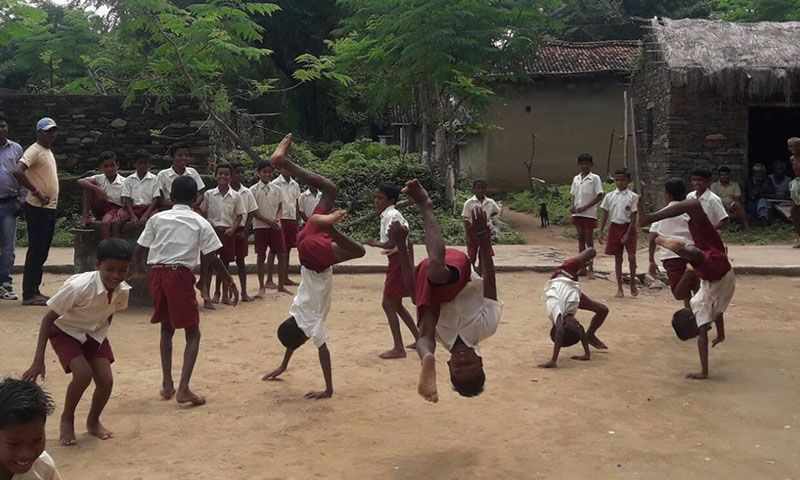
What are the significant challenges you faced in the beginning, and how did you overcome those challenges?
Initially, when you go to a community there must be clarity in your mind that what exactly you want to do. The big challenge that I faced was to find a common meeting place or a point for all as it is difficult to gather all with diverse ideas and they do not want to sit together so I overcame this challenge by founding and created a meeting point and that was library. Secondly, despite having a full-time job I used to do all these on Saturdays and Sundays and whenever I have holidays. I have not taken a single leave and utilized my personal leaves like LTA and LTC for serving the community and even not gone to watch a single movie in the last ten years as I wanted to contribute each moment of my life to serve society.
What are the difficulties in setting up a social venture in India?
Here are a few difficulties:
- Access to finance: In India, attracting early-stage investments has been a universal barrier for all social entrepreneurs. Social enterprises have suffered due to their dependence on external agencies for their sustenance. Their options to raise funds for themselves from financial institutions have been highly limited. Despite the support offered in the initial stages by prominent organizations it is extremely difficult for social enterprises in the initial phase of their operations to find a firm footing.
- Lack of financial and legal support in the nascent stage.
In your opinion, what are the significant challenges young social entrepreneurs in India face?
One of the most pertaining challenge young social entrepreneurs face is Self-doubt. For every entrepreneur, initial stage is one of the toughest and it is tougher for Social entrepreneurs due to lack of access to funds and support.
What are some initiatives that the policymakers should implement to promote the development of sustainable social enterprises?
Policymakers should consider that till the 19th century India was an industrial country. Why because we have a great number of artisans and those artisans are still there. What we had done that we have not allowed them to have a place in our public life. We should try and create a system by which artisans become an essential part of our modern Indian life. It is not as if they are out of modern life…we have handicraft…Ayurveda etc…We should try or make them teach younger students. Policymakers should underline our inherent strength. We need not bring all the strength from Europe or America. We should evaluate our own internal strength and make provisions so that the internal strength can unfold and sustain our country along with the other technology whatever we are taking from. For whatever reasons we have overlooked or marginalized our strength and should be brought back.
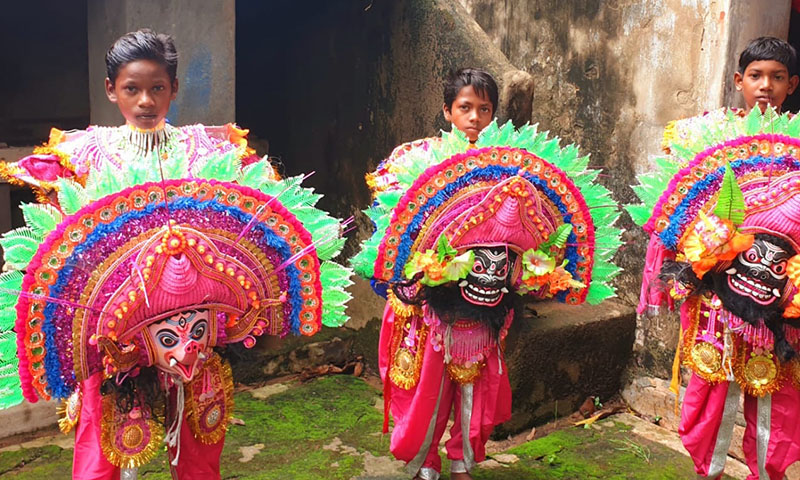
What advice would you give to the social entrepreneurs who are starting?
Given the current scenario, resilience is most important while starting social entrepreneurship journey.
Tell us about your plans. What are your short-term and long-term goals?
I usually have long terms plans. I believe that in such plans or initiatives whatever steps you take whether short term must aim to fulfil long term plans. My foremost aim is to create awareness and tell everyone that there is a great piece which is called individual social responsibility. So, every individual has a role to play to create this world as a happy world to live. I have adopted a village in the district of Ranchi long back and I have been donating my salary for a long time now to make it a happy village. Once the village becomes a model, I will go to the next village to make it a happy village and the chain will continue to many other villages. I believe that in the next 10 years I will be able to create a happy panchayat through own contributions and this is my long-term plan.




